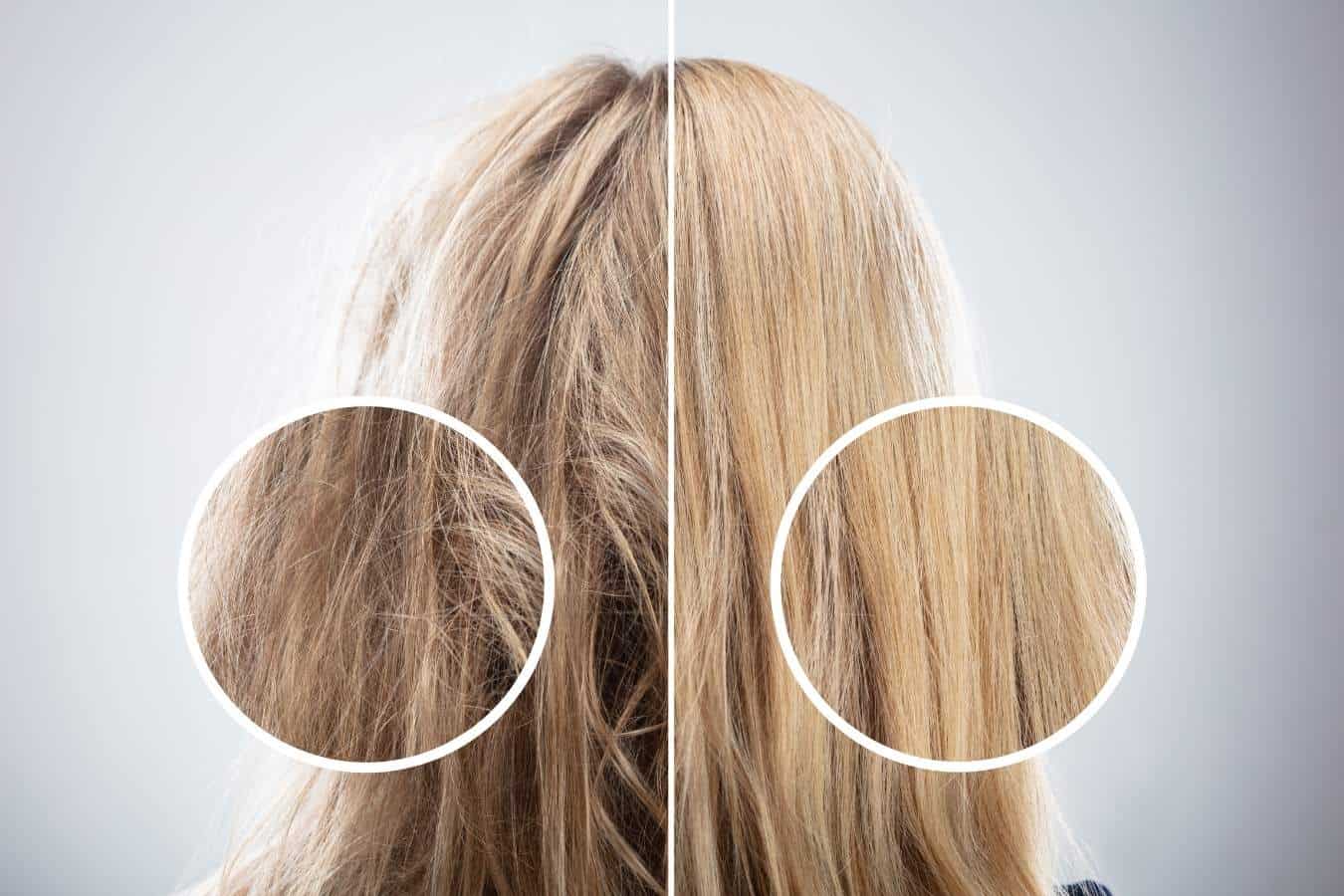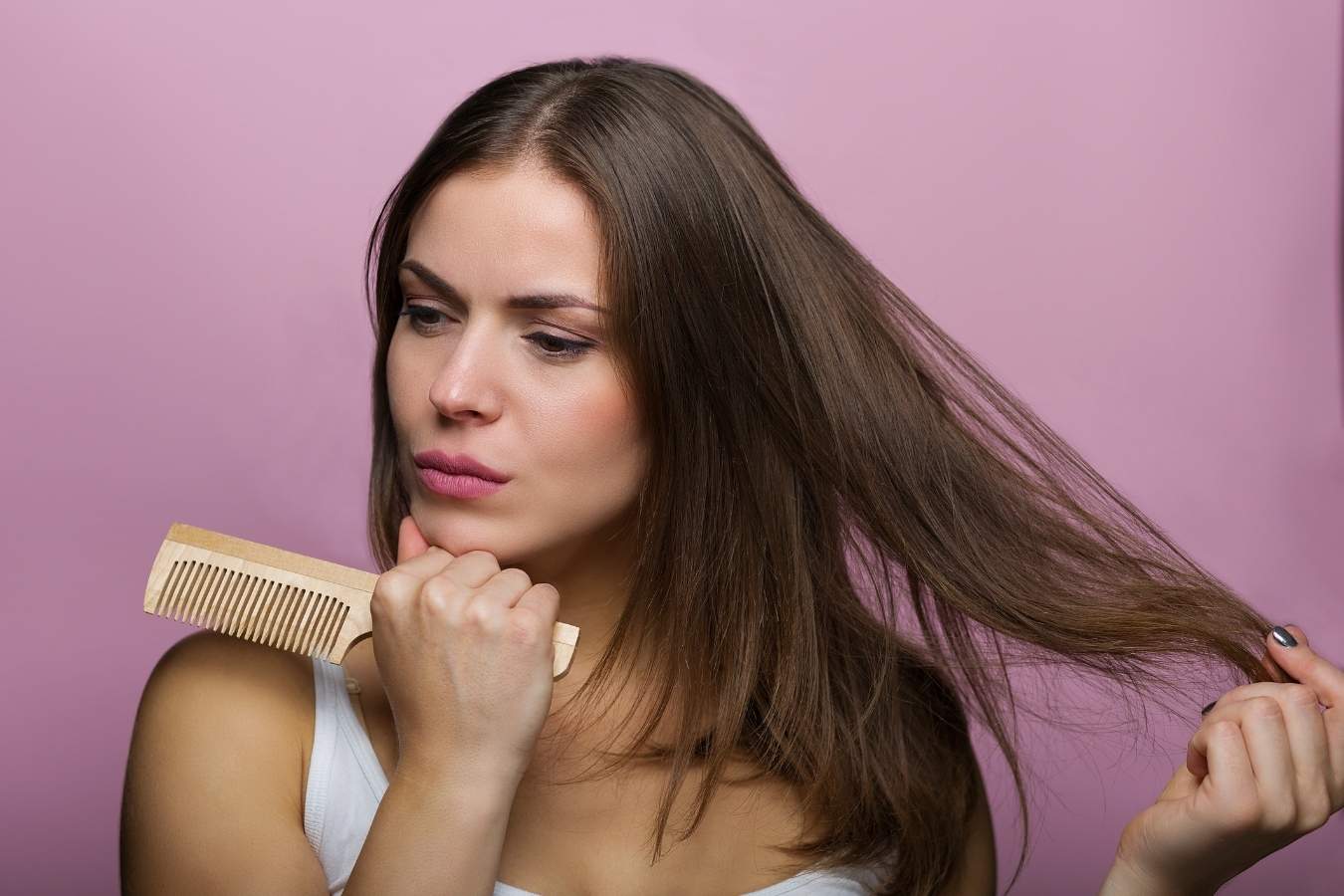As the name suggests, Aussie Moist products infuse hair with moisture, so you may be interested in adding them to your low porosity hair regimen. But, before you do that, here’s what you need to know about hair with low porosity and Aussie Moist.

The problem with low porosity hair is that it’s resistant to absorbing moisture. However, using Aussie Moist products can help. For instance, Aussie Moist shampoo and conditioner contain avocado and Australian Jojoba oil that moisturize dry and thirsty hair. The good news is, low porosity hair retains moisture better once hydrated.
This post contains affiliate links and we may earn if you click on them (at no extra cost to you). Please read our full disclosure policy here.
In A Hurry? Our Top Aussie Products
| Image | Title | Buy |
|---|---|---|
Top Top Top | Aussie Destress Clarifying Shampoo, Infused with Reing Mosa Mint and Australian Pepperberry, Fresh, 10.1 Fl Oz | Buy on Amazon |
 Top Top | Aussie Paraben-Free Miracle Moist Shampoo with Avocado & Jojoba for Dry Hair, 30.4 Fluid Ounce, (Pack of 4) | Buy on Amazon |
 Top Top | Aussie Reconstructing Deep Conditioner, Paraben & Dye Free, 8 fl Oz | Buy on Amazon |
 Top Top | Aussie Paraben-Free Miracle Moist Conditioner for Dry Hair,12.1 Fl Oz (Pack of 6) | Buy on Amazon |
What Is Low Porosity Hair
The hair shaft comprises three layers. The medulla is the innermost layer, the cortex is the middle layer, and the cuticle is the outermost layer.
Hair porosity is a term that refers to the hair’s ability to absorb moisture and hold it in.
The cuticles in low porosity hair are often likened to tightly-packed roof shingles that lie flat and prevent moisture penetration.
The closed cuticles make it harder for water and hair products to enter the deeper layers of the hair shaft.
In contrast, high porosity hair has cuticles that are more open or spaced further apart. That means high porosity hair has more gaps or pores, so the hair shaft quickly absorbs moisture.
Low porosity hair is mostly due to genetics, and it’s common in people with straight hair, though it can be found in curly hair.
While it can be a nuisance because of its moisture resistance, this hair type is often considered healthier because it has more undamaged strands.
The tightly packed cuticles also protect the hair from external damage caused by styling and environmental factors.
But low porosity hair can become high porosity due to continued heat, styling, or chemical treatments, which damage and raise the cuticle layer.
Is Aussie Moist Good For Low Porosity Hair?
Hair with low porosity and Aussie Moist products can be a good combination.
That’s because Aussie Moist products are infused with avocado and Australian jojoba oil that benefit low porosity hair in many ways.
Avocado oil is a natural oil with a penetration-enhancing effect, so it can moisturize and condition low porosity hair.
Because it’s lightweight, it won’t leave the hair greasy, and it doesn’t weigh your strands down.
Similarly, Australian jojoba oil is an emollient agent, meaning it has hair penetrative and moisturizing abilities.
One study showed that its properties as a liquid wax allowed it to penetrate hair follicles and remove sebum deposits.
Aussie Moist products are also packed with other conditioning ingredients that help moisturize low porosity hair.
Best Aussie Moist Hair Care Routine For Low Porosity Hair
Aussie Moist can improve your moisturizing strategy if you have low porosity or natural hair.
Here’s how to incorporate different Aussie Moist products to help moisturize your hair from the inside out:
Shampoo
Use Aussie miracle moist shampoo (it’s sulfate and paraben-free) two or three times a week. Apply a coin-sized amount to wet hair and work into a lather while massaging the scalp.
It’s also essential to use a clarifying shampoo every couple of weeks to remove product build-up.
Use A Hair Mask
After shampooing, you can apply a hair mask like the Aussie Reconstructing Deep Hair Mask. Squeeze out excess water from your hair beforehand to allow the product to saturate your strands quickly.
Start at the tips and make sure each strand is covered. Leave for 3 minutes and rinse thoroughly. This hydrating deep conditioning treatment is perfect for low porosity hair.
Use Conditioner Regularly
Apply Aussie Moist conditioner. You’ll find that this product provides excellent slip that allows you to easily detangle hair using your fingers.
Use heat to help your hair to absorb moisture, for instance, by sitting under a hooded dryer.
Moisturize regularly to prevent hair from feeling brittle and dry. You can also use a detangling comb to properly distribute the product throughout the hair.
Detangle
If you have kinky, curly, or frizzy hair, apply Aussie detangling milk. This leave-in conditioner contains coconut oil and jojoba that penetrate and moisturize hair.
While a leave-in conditioner is not usually recommended for hair, it can still be used sparingly if it’s lightweight.
Apply Gel
Aussie hair gel is also a great option if you want defined curls. Squeeze a dollop of the product into your hand and apply it through the hair. It may be necessary to use heat to allow the product to absorb quickly.
Low porosity hair doesn’t tend to have much volume, but this hair gel is designed to give your hair volume, texture, and hold.
Similarly, Aussie Mousse boosts volume and curl definition. Work it through damp hair beginning at the roots, then blow-dry and finish your style as desired.
Signs You Have Low Porosity Hair

Overall, low porosity hair takes longer to wash and dry. It’s prone to build-up, flatness, and greasiness. On the upside, low porosity hair tends to have more sheen and undamaged hair.
Let’s look at the signs of low porosity hair in more detail”
Your Hair Takes Longer to Wash and Dry
Because it has compact cuticles, it’s challenging for low porosity hair to become saturated with water. That means it takes longer to get wet when you’re washing it.
Hair also takes longer to dry after washing if you’re just air drying. You have to blowdry to lift the cuticles and allow the moisture to evaporate. Alternatively, you can use cotton to absorb the water faster.
Hair Products Don’t Penetrate the Hair Shaft Easily
When your hair has high porosity, it quickly absorbs hair products.
But, low porosity hair often requires a hooded dryer or steam from the shower or sauna when applying conditioner or other treatments.
The heat raises the cuticle layer, allowing the hair strands to absorb moisture well. Using cold water to rinse afterward will help seal the cuticle layer again.
Your Hair is Smooth and Shiny
Healthy low porosity hair has a smooth and shiny appearance. That’s because the cuticle layer is closed and smoothly sealed.
When it’s hydrated, the hair holds onto moisture better, making the strands softer and shinier.
In addition, because the cuticles overlap tightly, it’s easier for hair oil or sebum to travel down the smoother surface of the hair shaft. This gives the hair more shine and gloss.
Your Hair Gets Greasy and Flat if You Add Butters and Oil
The biggest complaint about low porosity hair is that hair products just sit there. This leads to a lot of greasiness and product build-up.
Product build-up flattens hair and robs it of its volume. Therefore, it’s essential to regularly wash your hair using a clarifying shampoo.
Also, use heavy oils and butters sparingly. Instead, opt for water-based products that are lighter and can moisturize your hair without weighing it down.
Your Hair Is Difficult to Dye, But the Color Takes Longer to Fade
As expected, low porosity hair doesn’t allow the color to deposit well when dyeing.
However, the results can be improved by cleansing and clarifying or using a pre-color or hot oil treatment. You can also bleach first or leave the dye for longer.
If you succeed in getting the color into your hair, it usually takes longer to fade unless the cuticle has been damaged.
Your Hair Doesn’t Respond Well to Protein Treatment Conditioners
Low porosity hair doesn’t need conditioners with protein formulas.
Protein provides structure, strength, and shape to your hair, but too much protein upsets the protein-moisture balance.
Protein treatments can be drying, and they overload the hair, which is the last thing low-porosity hair needs.
It’s better to moisturize regularly instead of applying protein treatments.
Do this by mixing a dollop of leave-in conditioner with water in a spray bottle and spritzing onto hair often.
You can also apply aloe vera gel or another humectant to draw moisture from the environment and hydrate your hair. You can then seal in the moisture with a lightweight emollient like argan oil.
Porosity Test

Three tests can be used to determine if you have low porosity hair. First, make sure to shampoo your hair and dry your hair. Clean hair produces more accurate results than hair that has product build-up.
Float Test
- Place room temperature water into a clear glass.
- Drop one of your hair strands into the water
- If the hair floats at the top of the water for a while before sinking, it has low porosity. Hair with normal porosity sinks slowly to the bottom without floating. High porosity hair sinks to the bottom of the glass more quickly because it becomes rapidly saturated with water.
Spray Test
- Take a spray bottle full of water.
- Spritz some water onto your hair.
- With low porosity hair, you’ll observe visible beads of water on the strand that remain unabsorbed after a while. The water sits on your strands with normal porosity hair but eventually gets absorbed. High porosity hair will quickly soak up the water.
Slip and Slide Test
- Take a dry hair strand and slide your fingers up the hair shaft moving from the ends to the scalp.
- If the hair strand feels bumpy, you likely have high porosity hair. But if your fingers slip and slide smoothly, you have low porosity hair.
Disclaimer: This site is not intended to provide professional or medical advice. All of the content on LovedByCurls.com is for informational purposes only. All advice should be followed at your own discretion. Ingredients may change at any time so always check the product label before using. Check our full disclaimer policy here.







